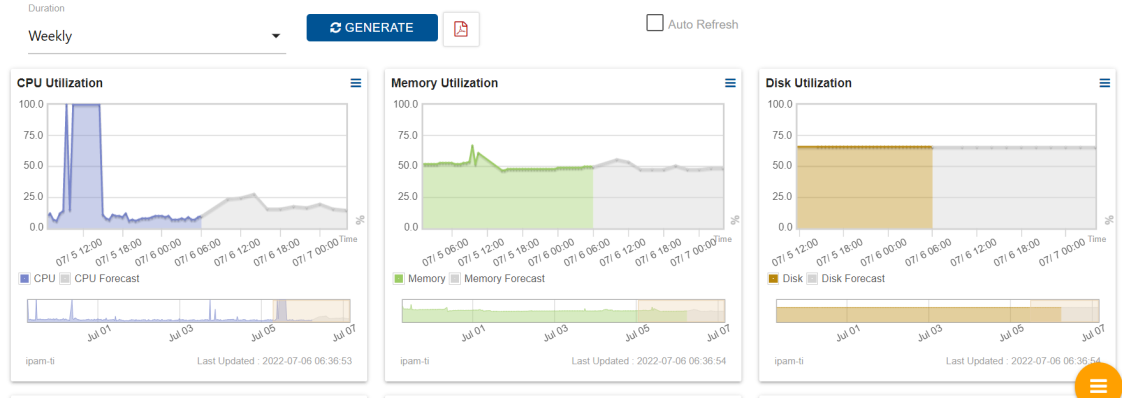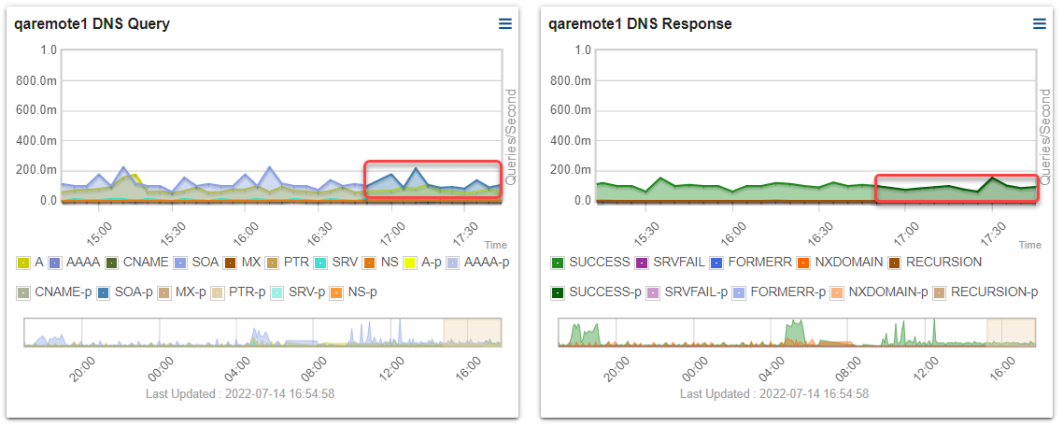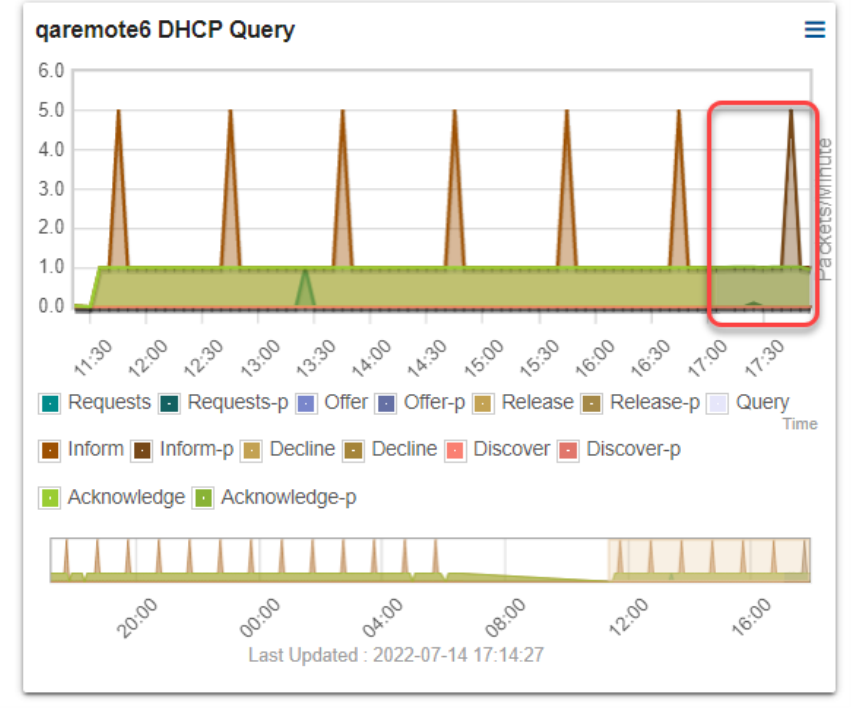In today’s dynamic era, the allocation of resources has become a primary concern in network infrastructure monitoring. So, there is a need to monitor and predict the usage of the performance metrics such as CPU, disk, and memory of various appliances within the organization to avoid network performance issues, overprovisioning, and under-provisioning. Traditional forecasting methods are challenging to detect resource usage in real-time data. Hence the organizations look forward to a solution to assess their resource usage based on the historical pattern that helps them manage their IT infrastructure in a better way. This whitepaper provides insights into TCPWave’s Forecasting Charts Using Machine Learing within the IPAM application.
TCPWave’s Forecasting Charts Using Machine Learning
Network infrastructure monitoring with an automated forecasting system is an add-on for an organization to effectively manage network performance and business continuity. The following section explains the forecasting of IPAM, DNS, and DHCP Appliances performance metrics.
|
Process
|
Performance Metrics
|
Solution
|
|
IPAM Forecasting
|
CPU Usage
Disk Usage
Memory Usage
|
SARIMA Time Series Machine Learning Model
|
|
DNS Forecasting
|
CPU Usage
Disk Usage
Memory Usage
Queries Per Second (QPS)
|
|
DHCP Forecasting
|
CPU Usage
Disk Usage
Memory Usage
Leases Per Second (LPS)
|
SARIMA Time Series Machine Learning Model
Seasonal Autoregressive Integrated Moving Average (SARIMA) is a time series Machine learning model used to forecast future data points using past data points. The model has two sets of integer parameters, denoted by (p,d,q) and (P, D, Q, S). The second set is the seasonal parameters.
|
Parameters
|
Description
|
|
p and P
|
The number of autoregressive terms.
|
|
d and D
|
Indicate differencing to make data stationary.
|
|
q and Q
|
Indicate moving average terms.
|
|
S
|
Indicate seasonal length in the data.
|
The historical time series data is used to forecast the performance metrics of the appliances based on daily, weekly, and monthly frequencies.
Global Policy Configuration
To enable the prediction of the performance metrics in the TCPWave IPAM application in the chart format under the Performance Management >> Charts section, you must set the global option Enable ML Forecasting Charts to Yes by navigating to Administration >> Configuration Management >> Global Policy Management. By default, the global option is set to No. On setting the global option to Yes, you can view the ML forecasted data in the grey shade as shown:
|
Navigation
|
Sample Screenshot
|
|
Infrastructure Management >> Performance Management >> IPAM Statistics >> Resource Utilization >> CPU Utilization, Memory Utilization, Disk Utilization
|

|
|
Infrastructure Management >> Performance Management >> DNS Statistics
-
CPU, Disk, Memory Utilizations
-
QPS
Note: QPS forecasted data is displayed in the highlighted part.
|


|
|
Infrastructure Management >> Performance Management >> DHCP Statistics
-
CPU, Disk, Memory Utilizations
-
LPS
Note: LPS forecasted data is displayed in the highlighted part.
|


|
Scheduler Management
To get the instant plots, you must execute the schedule jobs for the first time after setting the global option to Yes. Otherwise, wait for the scheduled job to be executed at their scheduled time.
Navigation: Administration >> Scheduler Management >> Scheduled Tasks
|
Name of the Schedule Job
|
Description
|
Schedule Time
|
|
CPUQPSLPSForecastDaily
|
Runs SARIMA ML Model for Forecasting Charts.
|
Daily at 23:45:00 GMT.
|
|
CPUQPSLPSForecastHourly
|
Runs SARIMA ML Model for Forecasting Charts.
|
Hourly at X:00; X = 0 to 24hrs.
|
|
CPUQPSLPSDailybestparamwriter
|
Writes Best Parameters for Daily data for Forecasting Charts.
|
Sunday at 18:00 GMT.
|
|
CPUQPSLPSHourlybestparamwriter
|
Writes Best Parameters for Hourly data for Forecasting Charts.
|
Sunday at 21:00 GMT.
|
Conclusion
With TCPWave’s forecasting charts, one can identify the trends and patterns using historical data. Using these trends, the network administrators can detect the outliers using Median Absolute Deviation statistical model that helps separate genuine insights from seasonal variations. It ensures enhanced security and reduced risks associated with excessive resource usage, safeguarding your organization’s entire IT infrastructure, and is integral for meeting compliance needs. For a quick demo, contact the TCPWave Sales Team.




